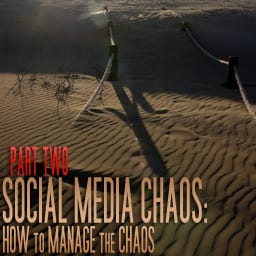Part 2: Social Media Chaos: How To Manage The Chaos
This is Part 2 of our 2-Part series on Social Media Chaos. In “Part 1: Social Media Chaos: The Shifting Sands of the Business Landscape”, we present the chaotic marketing environment created by social media. To recap the last few paragraphs of Part 1, here’s how companies fall victim to hasty mistakes in each of…


